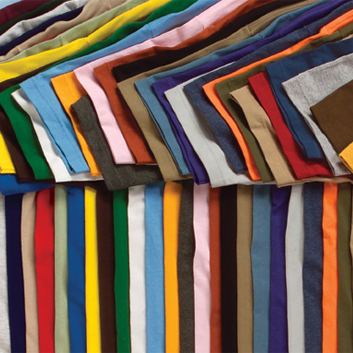Screen Printing vs Heat Press: What Makes Them Different?

Screen printing and heat press are two methods anyone who is looking to either purchase custom shirts or start a t-shirt printing business should know about. Since they vary in several categories, including quality, cost, and versatility, one will likely be able to meet your needs better than the other.
A few other printing options are direct-to-film printing, sublimation printing, and digital printing. Each method has its own advantages and considerations, with dtf station film providing excellent detail and color vibrancy, making it an ideal choice for complex designs that require high-resolution printing.
Today, we'll be giving you a more in-depth insight into both these methods so that you'll know exactly what you're in for. Here are the main differences between the heat press and screen printing techniques.
Heat Press vs Screen Printing
While both are great methods for garment printing, screen printing and heat press each has its own advantages and disadvantages.
1. History
Screen printing has roots that date way, way back to ancient times. Stenciling already existed during this period and was practiced by the ancient Egyptians. It later spread to China and Greece, where screens were created using silks. During this time, berries, colorful minerals, and roots were utilized as ink.
On the other hand, heat transfer didn't exist until sometime around the mid 20th century when it was invented by a company called SATO. The heat press machine followed several decades later, in the 1980s.
2. Items Needed
What items do you need to go about each method? For screen printing, you would need an actual screen to begin. One basically cuts these screens to produce the stencils needed for the design. Ink is then spread over these screens so that it can pass through them and into the items to be printed.
The number of screens you have should equal the number of colors your design has. This is because only one color should be used per screen.
For heat pressing, heat and pressure are the main factors that transfer custom designs onto objects. Depending on what suits you better, you can either go about this method through vinyl heat transfer or digital heat transfer.
Vinyl heat transfer requires a machine to create cutouts. These colored pieces of vinyl are then transferred onto the object you're printing on via a heat press machine.
Digital heat transfer, on the other hand, requires specialty paper called heat transfer paper for you to print the graphic on. It also requires specialized ink called solvent ink, which can be transferred into fabrics using pressure and heat. While you can use a basic home iron or heat press machine for this, we'd recommend the latter as it's able to produce much better results.
3. Cost-Effectiveness
A major factor that determines the cost of your venture is the number of garments you're printing.
Screens may be quite expensive to produce, but they can be reused. So, if your project only requires you to print a few hundred garments, then it wouldn't be ideal to use the screen printing method.
For more than five-hundred shirts, however, we'd advise you to opt for screen printing as the cost for producing each screen would be distributed across the number of garments to be printed. As far as cost-effectiveness is concerned, screen printing is only advantageous when you're printing in bulk.
Vinyl heat transfer, on the other hand, is a method where the cost remains constant regardless of the number of shirts you're printing. This, in part, has to do with the price of vinyl essentially staying the same.
As for digital heat transfers, it's usually a case-to-case basis since there are instances when transfer papers can be reused, which, consequently, reduces the costs as more garments are printed.
With regard to cost-efficiency in general, heat transfer is much more appropriate for small-scale projects.
4. Speed
As mentioned, there should only be one screen per color in screen printing. The problem with this lies in the preparation time; a screen can take quite a while to prep. Then again, once the screens have been prepared, the actual printing actually takes place in a breeze.
If you're taking on a small-scale printing project where multi-colored designs are involved, screen printing can be pretty time-consuming. However, if you're printing a thousand shirts involving one- or two-color designs, then this should definitely be your go-to method.
If you're doing heat transfer with colored vinyl, the time it would take you to accomplish each transfer usually remains the same. So, if you're planning on printing only a few shirts, then this would be a more time-efficient method to use.
Final Thoughts
If you're looking to do some direct-to-shirt printing of your own, know that both screen printing and heat press methods are capable of providing great results. Before you choose a method, though, go over each process's cost-effectiveness, printing speed, and item requirements to see which of them you can leverage given your needs.
If you're taking on a large-scale project that involves bulk printing, screen printing should give you an advantage in all these areas. On the other hand, if you're only printing a few shirts, you should be able to leverage heat pressing. Whatever project you decide to undertake, we recommend you see more information before taking that first step.
839GYLCCC1992


 (2 votes, average: 4.50 out of 5)
(2 votes, average: 4.50 out of 5)
Leave a Reply